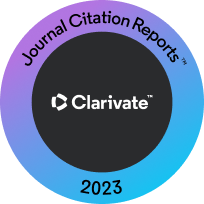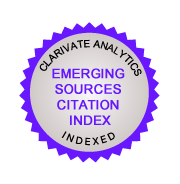EXPLORING THE RELATIONSHIP BETWEEN MOBILE ADDICTION, INTERPERSONAL RELATIONSHIP, AND ACADEMIC BEHAVIOR AMONG YOUNG ADULTS IN TERTIARY INSTITUTIONS
DOI:
https://doi.org/10.32890/mjli2021.18.2.10Keywords:
Academic behaviour, young adults, tertiary institutions, higher education, interpersonal relationship, mobile addiction, smartphone useAbstract
Purpose – Smartphones have become part and parcel of life in the 21st century. Since there has been limited research exploring the relationship between mobile addiction, interpersonal relationship, and academic behaviour among young adults in tertiary institutions, the present study has embarked on an exploration of the relationship between these three variables in the Malaysian higher education context.
Methodology – A descriptive correlational research design was employed to collect and analyse the data, which came from a total of 150 young adults who responded to an online Google form distributed through a WhatsApp link. The items in the questionnaire were adapted from various doctorate studies. The data were analysed using descriptive and inferential statistics such as the mean and standard deviation, correlation, and multiple regression.
Findings – The study found that young adults in tertiary institutions in Malaysia experienced a case of moderate mobile addiction. The results also established that the three variables, namely mobile addiction, interpersonal relationship, and academic behaviour, were interrelated. The findings revealed that interpersonal relationship has positively contributed to the variance of academic behaviour, while mobile addiction has negatively impacted young adults’ academic behaviour in tertiary institutions.
Significance – The findings have provided valuable insights into how to help facilitate the monitoring of disruptive mobile usage among young adults in tertiary institutions.
Metrics
References
Aguilar-Roca, A., Williams, A., O'Dowd, D.K. (2012). The impact of laptop-free zones on student performance and attitudes in large lectures. Computers & Education, 59(4), 1300-1308.
Amez, S. & Baert, S. (2020). Smartphone use and academic performance: A literature review. International Journal of Educational Research. 103, p. 101618.
Aravind, C.V., Gamboa, R. A., & Lim, S. C. (2019). Empowered pedagogy: Catching up with the future. Malaysian Journal of Learning and Instruction, 16(1), 1-22.
Atas, A.H. & Çelik, B. (2019). Smartphone use of university students: Patterns, purposes, and situations. Malaysian Online Journal of Educational Technology, 7(2) http://dx.doi.org/10.17220/mojet.2019.02.004
Auter, P. J. (2007). Portable social groups: willingness to communicate, interpersonal communication gratifications, and cell phone use among young adults. International Journal of Mobile Communications, 5(2) p. 139.
Awang-Hashim, R., Kaur, A., & Valdez, N. P. (2019). Strategising inclusivity in teaching diverse learners in higher education. Malaysian Journal of Learning and Instruction, 16(1), 105-128.
Bjornsen, C. A. & Archer, K. J. (2015). Relations between college students’ cell phone use during class and grades. Scholarship of Teaching and Learning in Psychology. Advance Online Publication. doi: 10.1037/stl0000045
Bianchi, A., & Phillips, J. G. (2005). Psychological Predictors of Problem Mobile Phone Use. Cyber Psychology & Behavior, 8(1), 39-51. doi:10.1089/cpb.2005.8.39
Billieux, J. (2012). Problematic Use of the Mobile Phone: A Literature Review and a Pathways Model. Current Psychiatry Reviews, 8(4) pp. 299–307.
Boumosleh, J., & Jaalouk, D. (2017) Depression, anxiety, and smartphone addiction in university students-a cross-sectional study. PLos ONE, 12(8)
Chen, S., & Tzeng, J. (2010). College female and male heavy internet users' profiles of practices and their academic grades and psychosocial adjustment. Cyberpsychology, Behavior and Social Networking, 13(3), 257-262. https://doi.org/10.1089/cyber.2009.0023
Cha, S.-S., & Seo, B.-K. (2018). Smartphone use and smartphone addiction in middle school students in Korea: Prevalence, social networking service, and game use. Health Psychology Open, 5(1) p. 205510291875504.
Chandrasena, T., Igarashi, J, Takai, & Yoshida, T. (2005) Gender differences in social network development via mobile phone text messages: A longitudinal study. Journal of Social and Personal Relationships, 22(5) pp. 691–713.
Chen, B., Seilhamer, R., Bennett, L, & Bauer, S. (2015). Students' Mobile Learning
Practices in Higher Education: A Multi Year Study. EDUCAUSE Review.
Retrieved from https://er.educause.edu/articles/2015/6/students‐mobile‐learning‐practices‐in‐higher‐education a‐ multiyear‐study.
Ching SM, Yee A, Ramachandran V, Sazlly Lim SM, Wan Sulaiman WA, Foo YL, et al. (2015). Validation of a Malay Version of the Smartphone Addiction Scale among Medical Students in Malaysia. PLoS ONE 10(10): e0139337. https://doi.org/10.1371/journal.pone.0139337
Dayapoglu, N., Kavurmaci, M., & Karaman, S. (2016). The relationship between the problematic mobile phone use and life satisfaction, loneliness, and academic performance in nursing students. International Journal of Caring Sciences, 9(2), 647-652
Demirci, K.; Akgönül, M.; Akpinar, A. (2015). Relationship of smartphone use severity with sleep quality, depression, and anxiety in university students. J. Behav. Addict., 4, 85–92.
De-Sola Gutiérrez J., Rodriguez de Fonseca, F., & Rubio, G. (2016). Cell-phone Addiction: A Review. Frontiers in Psychiatry, 7, 175, https://doi.org/10.3389/fpsyt.2016.00175
Dian, T. P., Maylawati, S., Sugilar, H., & Ramdhani, M. A. (2020). Key Success Factors of e-Learning Implementation in Higher Education, International Journal of Emerging Technologies in Learning, 15(17) pp. 101-114.
Donnie, A., Bambang, S., Ahmed, M., Noor., Mohamad, N. R. (2018); E-Learning Readiness among Students of Diverse Backgrounds in a Leading Malaysian Higher Education Institution, Malaysian Journal of Learning, and Instruction, 15(2), 227-256.
Ehrenberg, A., Juckes, S., White, K. M., & Walsh, S. P. (2008). Personality and Self-Esteem as Predictors of Young People's Technology Use. Cyber Psychology & Behavior, 11(6), 739-741. doi:10.1089/cpb.2008.0030.
Emad AS & Eman H. (2015). The Influence of Smart Phones on Human Health and Behavior: Jordanians’ Perceptions. International Journal of Computer Networks and Applications, 2(2):52-6.
Engelberg, E., & Sjöberg, L. (2004). Internet use, social skills, and adjustment. Cyberpsychology & Behavior, 7(1), 41-47. doi: 10.1089/109493104322820101
Fraenkel, J. R., Wallen, N. E., & Hyun, H. H. (2012). How to design and evaluate research in education (8th ed.). New York: McGraw-Hill.
Hiscock, D. (2004). Cell phones in class: this, too, shall pass?" Community College Week, 16.
Hoffman. (2009). Evaluating Social Networking Tools for Distance Learning, Proceedings of TCC 2009.
Hong, F., Huang, D., Lin, H., & Chiu, S. (2014). Analysis of the psychological traits, Facebook usage, and Facebook addiction model of Taiwanese university students. Telematics and Informatics, 31(4), 597-606. doi:10.1016/j.tele.2014.01.001.
Houston, M. L. (2019). The effects of internet addiction on college students: The relationship between internet addiction test scores, college student demographics, and academic achievement (Order No. 27668034). Available from ProQuest Dissertations & Theses Global. (2411017872). Retrieved from http://search.proquest.com.ezaccess.library.uitm.edu.my/dissertations-theses/effects-internet-addiction-on-college-students/docview/2411017872/se-2?accountid=42518
Jeong, H. & Lee, Y. (2015). Smartphone addiction and empathy among nursing students. Advanced Science and Technology Letters. 88(47) pp. 224–228.
Joshi, S.V., Stubbe, D., Li, ST.T. et al. (2019). The Use of Technology by Youth: Implications for Psychiatric Educators. Acad Psychiatry, 43, 101–109.
Kim, D., Lee, Y., Lee, J., Nam, J. K., & Chung, Y. (2014). Development of Korean Smartphone Addiction Proneness Scale for Youth. PLoS ONE, 9(5). doi: 10.1371/journal.pone.0097920
Kimball, E., & Kim, J. (2013). Virtual boundaries: Ethical considerations for use of social media in social work. Social Work, 58(2), 185-188. doi:10.1093/sw/swtO05
Ko, C.H.; Yen, J.Y.; Yen, C.F.; Chen, C.S.; Chen, C.C. (2012). The association between Internet addiction and psychiatric disorder: A review of the literature. Eur. Psychiatry, 27, 1–8
Lanette, S. (2018). The mere presence of mobile phones during parent-teen interactions (Order No. 10827141). Available from ProQuest Dissertations & Theses Global. (2099659561). Retrieved from http://search.proquest.com.ezaccess.library.uitm.edu.my/dissertations-theses/mere-presence-mobile-phones-during-parent-teen/docview/2099659561/se-2?accountid=42518
Lanette, S., Chua, P. K., Hayes, G., & Mazmanian, M. (2018). How Much is 'Too Much'?" Proceedings of the ACM on Human-Computer Interaction, 2, CSCW, pp. 1–22.
Lee, J., Cho, B., Kim, Y., & Noh, J. (2014). Smartphone Addiction in University Students and Its Implication for Learning. Emerging Issues in Smart Learning Lecture Notes in Educational Technology, pp. 297–305.
Lepp, A., Barkley, J. E., & Karpinski, A. C. (2014). The relationship between cell phone use, academic performance, anxiety, and Satisfaction with Life in college students. Computers in Human Behavior, 31, 343-350. doi: 10.1016/j.chb.2013.10.049.
Lopez-Fernandez, O. (2018). Generalised versus specific internet use-related addiction
problems: A mixed-methods study on internet, gaming, and social networking
behaviours. International Journal Environment Res Public Health, 15, 2913,
doi:10.3390/ijerph15122913
Malaysian Communications and Multimedia Commission, (2019). Network Performance Report 2019 Measuring Malaysia Broadband and Voice Performance. Retrieved from https://www.mcmc.gov.my/skmmgovmy/media/General/pdf/QoS-Network-Performance-Report-2019.pdf
Mccarroll, M., Lindsey, C., Mackinnon-Lewis., Chambers, J. C., & Frabutt, J.M. (2008). Health Status and Peer Relationships in Early Adolescence: The Role of Peer Contact, Self-esteem, and Social Anxiety. Journal of Child and Family Studies, 18(4), pp. 473–485.
Misra, S., Cheng, L., Genevie, J., & Yuan, M. (2014). The iPhone effect: The quality of in-person social interactions in the presence of mobile devices. Environment & Behavior, 1-24.
National Center for Education Evaluation and Regional Assistance (2017). Descriptive
analysis in education: A guide for researchers. Retrieved from https://files.eric.ed.gov/fulltext/ED573325.pdf
Nguyen, H.T.H., Pham, H.V., Vu, N. H., Hoang, H. T. (2020). Factors Influencing Students' Intention to Use E-learning System. International Journal of Emerging Technologies in Learning, 15(18) pp. 165-182.
Nizar, N. N. M., Rahmat, M. K., Maaruf, S. Z., & Damio, S. M. (2019). Examining the Use Behaviour of Augmented Reality Technology through MARLCARDIO: Adapting the UTAUT Model. Asian Journal of University Education, 15(3) p. 198-210.
Noradilah, M. N. (2012). Perceived stress, smartphone dependency, coping behaviors, and psychological well-being among undergraduate students in Malaysia". Ph. D Thesis. Iowa State University, Ames, Iowa.
Okafor, C., Asibong, U., Asibong, I., Ayi, E., Omoronyia, O. & Owoidoho, U. (2020). Psychological distress and social media usage: A survey among undergraduates of a university in Calabar, Nigeria. Nigerian Postgraduate Medical Journal, 27(2).
Park, N., & Lee, H. (2012). Social Implications of Smartphone Use: Korean College Students' Smartphone Use and Psychological Well-Being," Cyberpsychology, Behavior, and Social Networking,15(9) pp. 491–497.
Pierce, T. (2009) Social anxiety and technology: Face-to-face communication versus technological communication among teens. Computers in Human Behavior, 25(6), pp. 1367
Additional Files
Published
How to Cite
Issue
Section
License
Copyright (c) 2021 Malaysian Journal of Learning and Instruction

This work is licensed under a Creative Commons Attribution 4.0 International License.




























